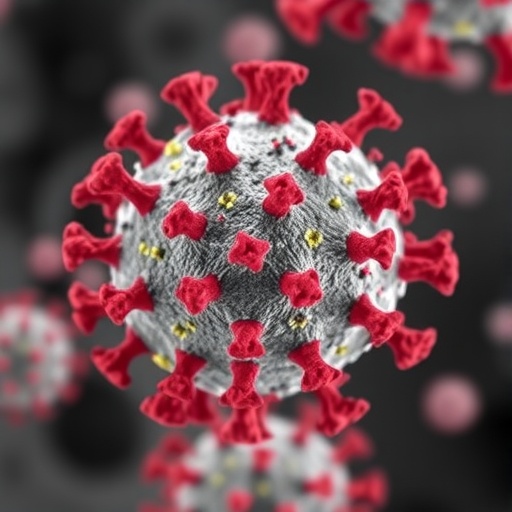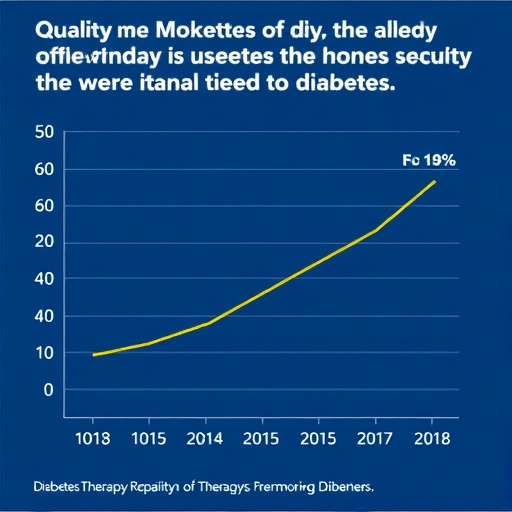
In a notable advancement in the ongoing battle against viral pandemics, a research team led by Xinyu Zhang, Xiaoyang Li, and Shiyu Liu has presented a comprehensive study on the design, synthesis, and evaluation of a novel class of compounds aimed at inhibiting the main protease of SARS-CoV-2, the virus responsible for COVID-19. Published in the journal Molecular Diversity, their work elucidates the potential of 2-arylthiomethyl-6-bromoindole derivatives, a class of molecules that could pave the way for effective therapeutic agents against this pervasive virus.
The main protease of SARS-CoV-2 plays a crucial role in the viral life cycle by processing polyproteins into functional proteins necessary for viral replication. Targeting this protease has become a focal point for drug development, as inhibiting its function can significantly disrupt the replication of the virus. The research team systematically designed and synthesized these new derivatives with the intent of blocking this protease’s activity, thereby providing a promising avenue for therapeutic intervention.
In constructing these 2-arylthiomethyl-6-bromoindole derivatives, the researchers employed strategic molecular design principles aimed at optimizing the interaction with the target protease. Various chemical modifications were made to the indole core structure, which is known for its biological versatility. This careful approach allowed the scientists to create compounds that not only possess the potential to bind effectively to the protease but also exhibit favorable pharmacological profiles, enhancing their viability as candidates for further development.
During the synthesis phase, the team utilized robust organic chemistry techniques, employing both known and innovative methodologies to create a library of compounds. Each synthesized derivative underwent rigorous analytical characterization, ensuring that their structures were confirmed before proceeding to biological testing. This meticulous approach reflects the researchers’ commitment to high standards and reproducibility, which are vital in drug discovery processes.
Biological evaluation was performed to assess the inhibitory activity of these derivatives against the SARS-CoV-2 main protease. To measure this activity, the researchers employed enzymatic assays that quantify the extent to which each compound could inhibit protease function. The results demonstrated that several of the synthesized derivatives exhibited promising inhibitory activity, significantly outperforming existing inhibitors in some cases, thus validating the hypothesis that these new compounds could serve as effective therapeutic agents.
Moreover, the researchers explored the structure-activity relationships (SAR) within their compound library. By correlating specific structural features with the observed biological activity, they identified key molecular attributes that enhance inhibitory efficacy. These insights are not only crucial for the current study but will also inform future medicinal chemistry efforts in designing next-generation protease inhibitors, broadening the scope of therapeutic options available for COVID-19.
Safety and toxicity assessments are paramount in the evaluation of potential drug candidates. The team undertook preliminary studies to assess the cytotoxicity of their derivatives using various mammalian cell lines. Preliminary results indicated that the derivatives displayed favorable safety profiles, raising confidence regarding their future therapeutic applications. Further studies will be necessary to fully elucidate any potential adverse effects and to ensure that the compounds can be administered safely in vivo.
The findings presented in this research are particularly timely and relevant, given the ongoing public health challenges posed by COVID-19. As novel variants of SARS-CoV-2 continue to emerge, the demand for effective antiviral therapies remains critical. The approach taken by Zhang, Li, Liu, and their colleagues exemplifies the significant contributions that fundamental research can make towards addressing real-world health crises, providing hope for better treatment strategies.
Throughout the study, the authors emphasized the importance of collaborative efforts in science, highlighting how interdisciplinary teamwork enables more innovative solutions to complex problems like pandemic response. The fusion of expertise in organic chemistry, molecular biology, and pharmacology underscored the multidisciplinary nature of contemporary drug discovery and development.
As the research progresses, the next steps will involve further optimization of the most promising derivative candidates. This could entail refining their pharmacokinetic and pharmacodynamic properties, ensuring that they can achieve effective concentrations at the site of action while minimizing side effects. The iterative nature of drug development is a hallmark of successful therapeutic innovation.
In conclusion, the groundbreaking work by Zhang and colleagues offers a roadmap for future antiviral drug development, specifically against SARS-CoV-2. By unveiling the inhibitory activities of 2-arylthiomethyl-6-bromoindole derivatives, they have made significant strides toward the goal of producing effective treatments for COVID-19. With ongoing research, further validation, and clinical trials, these derivatives could soon represent a novel class of antiviral agents ready to combat ongoing and future global health threats.
As the world navigates the complexities of the COVID-19 pandemic, it is critical to support ongoing scientific research efforts. The results from this study are a testament to the power of targeted drug design in addressing viral diseases and highlight the potential for chemistry and biology to come together in the fight against infections that threaten public health worldwide.
The journey to a new antiviral treatment is fraught with challenges, but the dedication and innovation demonstrated in this research signify a step forward. The scientific community is clearly mobilized, and such studies serve to inspire future generations of researchers as they take on the vital task of protecting global populations from infectious diseases.
Subject of Research: Inhibition of SARS-CoV-2 main protease using 2-arylthiomethyl-6-bromoindole derivatives.
Article Title: Design, synthesis and SARS-CoV‑2 main protease inhibitory activities of 2-arylthiomethyl-6-bromoindole derivatives.
Article References:
Xinyu, Z., Xiaoyang, L., Shiyu, L. et al. Design, synthesis and SARS-CoV‑2 main protease inhibitory activities of 2-arylthiomethyl-6-bromoindole derivatives.
Mol Divers (2025). https://doi.org/10.1007/s11030-025-11308-1
Image Credits: AI Generated
DOI:
Keywords: SARS-CoV-2, main protease, inhibitors, antiviral therapy, medicinal chemistry, structure-activity relationship.
Tags: 2-arylthiomethyl-6-bromoindole derivativesantiviral drug developmentchemical modifications in drug designCOVID-19 therapeutic agentsenzyme inhibition strategiesmolecular design in drug synthesisnovel compounds against COVID-19protease role in viral replicationresearch on indole-based compoundsSARS-CoV-2 protease inhibitorstargeting viral proteasestherapeutic intervention for pandemics




